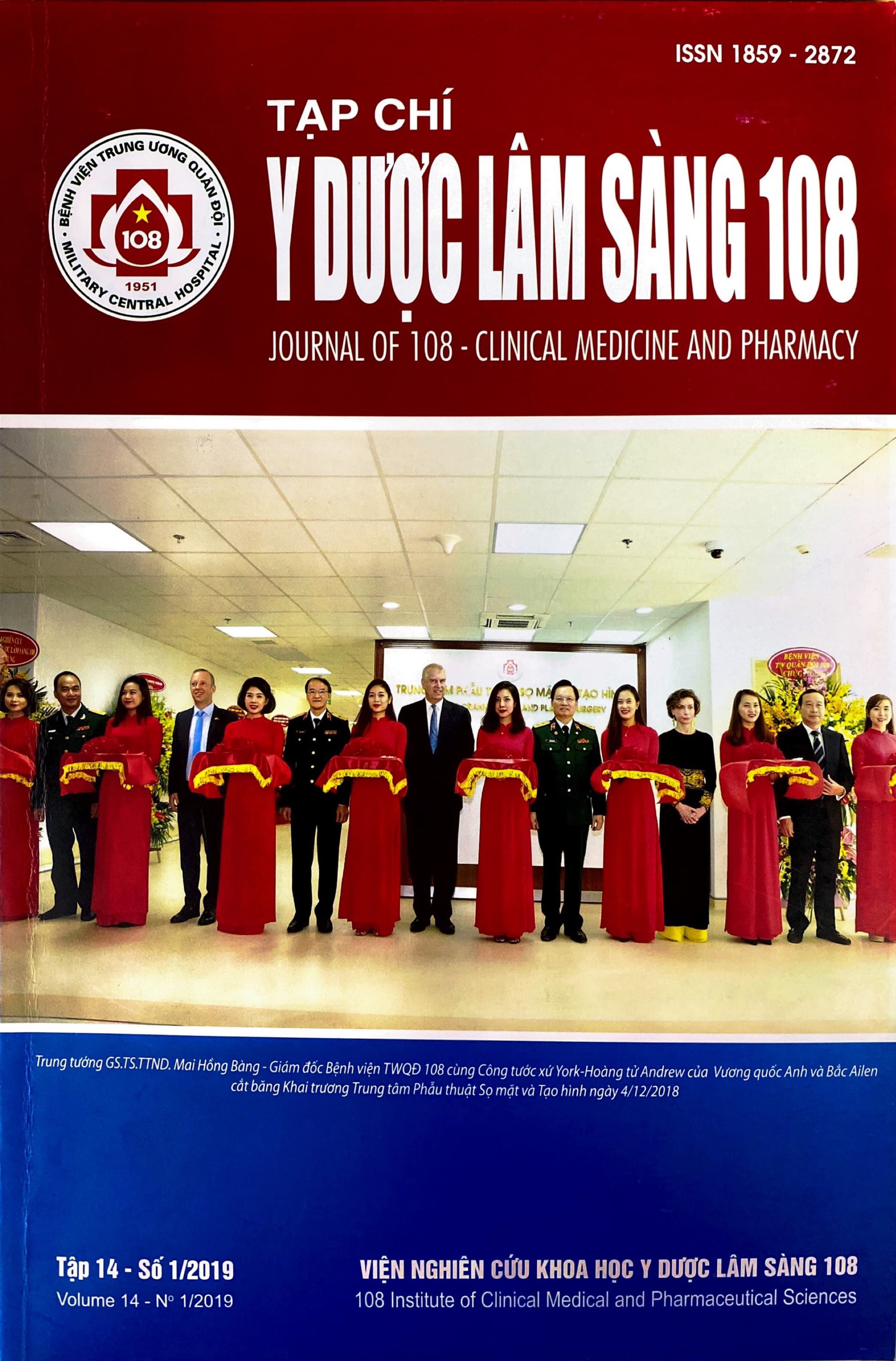Factors influencing clinical outcomes of infrapopliteal angioplasty in patients with peripheral arterial disease
Main Article Content
Keywords
Abstract
Objective: To indentify factors influencing clinical outcomes of infrapopliteal percutaneous transluminal angioplasty (PTA). Subject and method: A retrospective and cross-sectional study was conductued on 91 infrapopliteal lesions of 85 patients suffering from lower extremity arterial disease (LEAD) treated in the Dept. of Cardiovascular Diagnosis and Intervention, the 108 Military Central Hospital, from May 2011 to June 2016. Result: The study showed that clinical stage of LEAD was more serious associated with hemodynamic success and higher 12 month restenosis rate (p<0.05). Infrapopliteal arterial lesion classification was more serious associated with lower 1 month wound healing rate (p<0.05) and higher 12 month restenosis (p<0.05). Patients with multi level arterial lesion had higher hemodynamic success and 12 month reintervention rate when compared to isolate infrapopliteal (85.7%, 22.2%, 28.3% in multi level group, 60%, 2.9%, 6.1% in isolate infrapopliteal group, respectively, p<0.05). The wound healing in direct angiosome group was significantly shorter than indirect group (2.6 ± 1.7 months and 4.4 ± 1.7 months, respectively, p<0.05). Conclusion: Clinical stage of LEAD, infrapopliteal arterial lesion classification (TASC 2015), multi level arterial lesion and infrapopliteal revascularization based on angiosome are factors influencing clinical outcome of infrapopliteal PTA.
Article Details
References
2. Fernandez N, McEnaney R et al (2010) Predictors of failure and success of tibial interventions for critical limb ischemia. J Vasc Surg 52(4): 834-842.
3. Korhonen M et al (2012) Predictors of failure of endovascular revascularization for critical limb ischemia. Scandinavian Journal of Surgery 101: 170-176.
4. Iida O, Soga Y, Hirano K et al (2012) Midterm outcomes and risk stratification after endovascular therapy for patients with critical limb ischaemia due to isolated below-the-knee lesions. Eur J Vasc Endovasc Surg 43(3): 313-21.
5. Rooke TW, Hirsch AT, Misra S (2011) ACCF/AHA focused update of the guideline for the management of patients with peripheral arterial disease (updating the 2005 guideline). J Vasc Surg 54: 32-58.
6. Michael Jaff, Christopher J White et al (2015) An Update on methods for Revascularization and Expansion of the TASC lesion classification to Include below-the-Knee arteries. Journal of Endovascular Therapy 22(5): 663-677.
7. Saqib NU, Domenick N, Cho JS et al (2013) Predictors and outcomes of restenosis following tibial artery endovascular interventions for critical limb ischemia. J Vasc Surg 57(3): 692-699.
8. Osami K, Satoshi Y, Janice H et al (2014) Contemporary infrapopliteal intervention for limb salvage and wound healing. Circulation Journal 78(7): 1540-1549.
9. Kobayashi N, Hirano K, Nakano M et al (2015) Predictors of non-healing in patients with critical limb ischemia and tissue loss following successful endovascular therapy. Catheter Cardiovasc Interv 85(5): 850-858.
10. Lida O, Soga Y, Kawasaki D et al (2012) Angiographic restenosis and its clinical impact after infrapopliteal angioplasty. Eur J Vasc Endovasc Surg 44(4): 425-431.
 ISSN: 1859 - 2872
ISSN: 1859 - 2872
